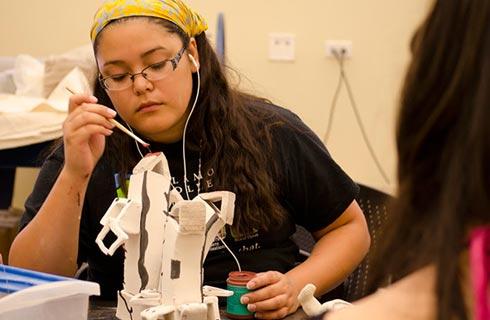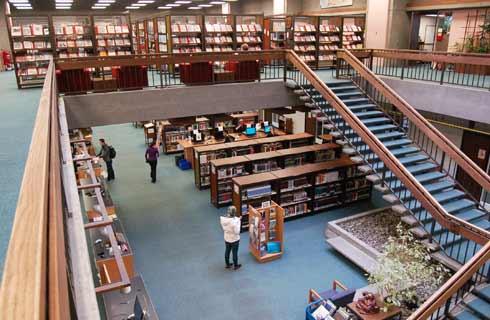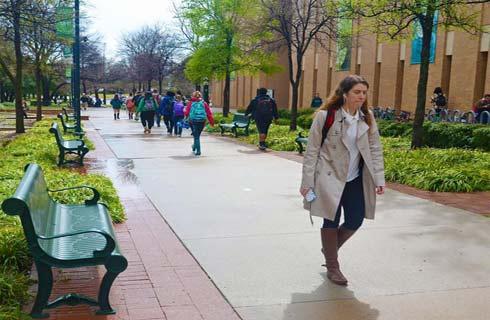国际学生入学条件
Official Transcripts from all secondary/high school and university-level study.
Official IGCSE, A-Level, IB, or AP results if taken.
TOEFL iBT/TOEFL Home Edition: 70, IELTS: 6.0
Cambridge English: 169, No individual score below 162
展开
IDP—雅思考试联合主办方

雅思考试总分
6.0
- 雅思总分:6
- 托福网考总分:70
- 托福笔试总分:160
- 其他语言考试:Pearson Test of English Academic: 48 No individual subscore of below 44
CRICOS代码:
申请截止日期: 请与IDP联系 以获取详细信息。
课程简介
The Bachelor of Fine Arts (B.F.A.) in art degree enables students to enter professional careers in art and to find their place in contemporary artistic practice, and allows students to have intensive study in a media area of their choice (graphic design, painting/drawing, photography, ceramics, printmaking, and digital media/motion graphics). It is the degree most often required for admission to graduate programs offering the Master of Fine Arts degree, which is the most accepted terminal degree in art and the degree required for college-level teaching. All B.F.A. students are required to minor in art history.<br>Students pursuing the Bachelor of Fine Arts (B.F.A.) in art complete the four core course requirements before taking intermediary and upper division courses.<br>Learning Outcomes<br>Students who complete the undergraduate program in fine arts will:<br>Demonstrate high level of conceptual and technical competency within at least one area of emphasis.<br>a. Students are evaluated on drawing competency, both as a stand-alone media and how these skills are applied in other media areas.<br>b. Students are evaluated on design knowledge and competency, both as a stand-alone media and how these skills are applies in other media areas.<br>c. Student projects are evaluated on the level of proficiency with the selected media and whether or not the student shows the potential for broad ranging technical refinement and sensitivity to materials.<br>Exhibit evidence of professionalism by developing a cohesive body of work, resume and artist statement, demonstrating the ability to apply historical and contemporary contexts to their own practice.<br>a. Student work is evaluated on whether or not there is evidence of conceptual development - meaning, the content of the work clearly expresses an original, creative, and thought-provoking theme, reflecting a strong personal direction in regard to the subject matter and the execution of their work. Technical proficiency/mastery in their chosen media area is evaluated in regard to how that supports the conceptual focus of the work.<br>b. Student work demonstrates a clear and insightful knowledge of past and present artistic influences and precedents (as reflected in the work and in the artist statement). Sometimes knowledge of historical context is reflected in targeted projects, but this attribute should become increasingly evident in the overall body of work as the students take higher level art courses (Note: all studio courses include aspects of viewing/discussing historical and contemporary artists relevant to the media area being taught).<br>c. Students are expected to exhibit evidence of the ability to properly document their work and develop well-written supporting professional materials (resumes, cover letters, etc.).<br>Successful execution of final project or exhibition, including written artist statement, which illustrates stylistic and conceptual competency of chosen art form.<br>a. Overall quality of the portfolio is evaluated as to whether or not the body of work reflects a high degree of consistency in quality, and in cohesiveness of theme, content and stylistic approach.<br>b. Professionalism is also evaluated as part of PLO 3 by looking at the quality of the images and supporting professional materials submitted.<br>c. Student final exhibitions and/or Senior projects are evaluated on their quality and execution.
展开







 预科
预科 奖学金
奖学金 实习机会
实习机会 在校学习
在校学习 跨境学习
跨境学习 校园授课-线上开始
校园授课-线上开始 在线/远程学习
在线/远程学习














 安大略艺术设计学院
安大略艺术设计学院

 安大略艺术设计学院
安大略艺术设计学院

 卡尔加里大学
卡尔加里大学

 约克大学
约克大学

 约克大学
约克大学

 汤姆逊大学
汤姆逊大学









 美国
美国